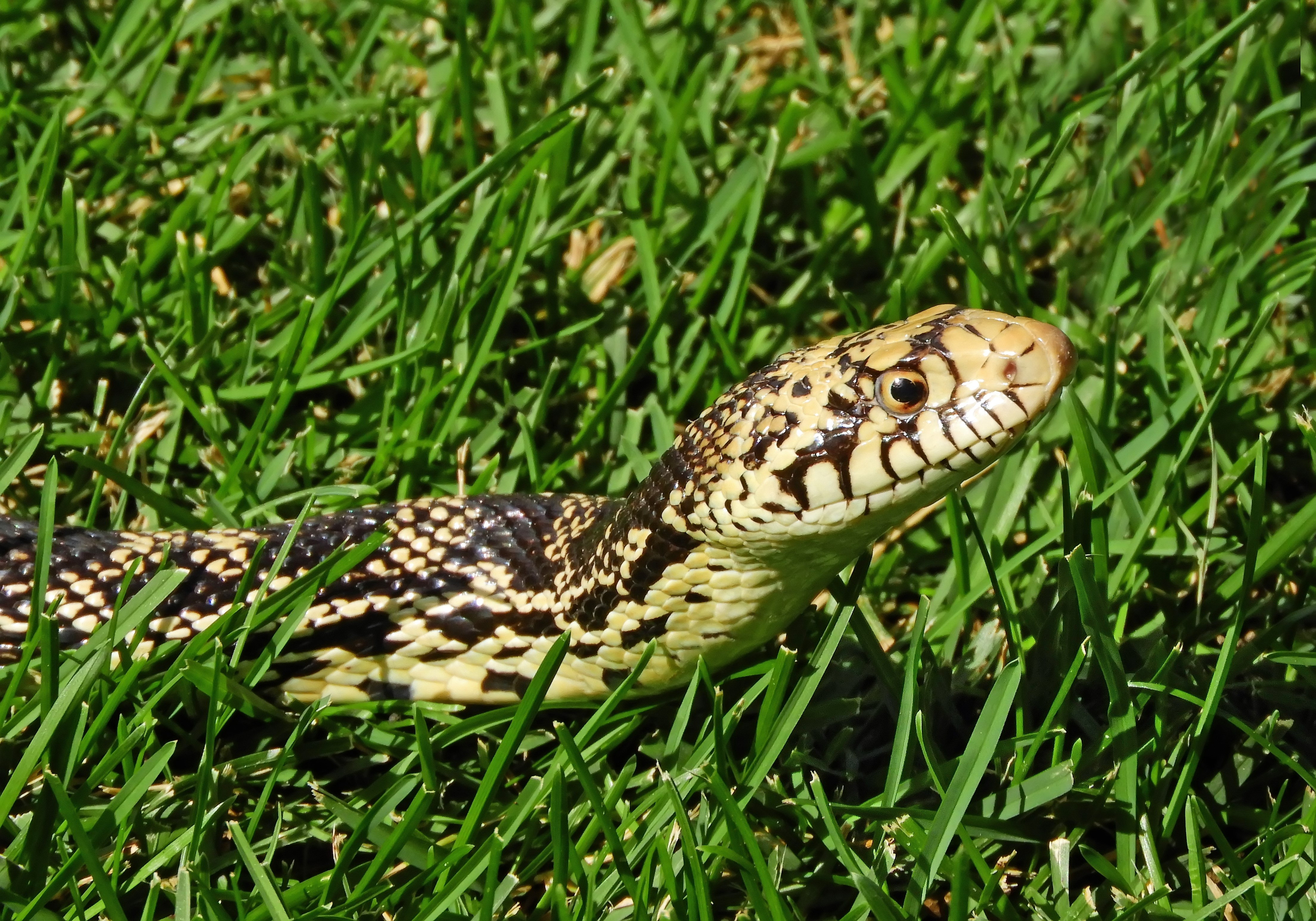Bull snake is one of the largest snakes in the United States. Adult bull snakes can grow to over 8 feet (2.5 meters) in length, but most measure 3 to 6 feet (1 to 1.8 meters) long. Bull snakes are yellowish with a series of black, brown, or reddish-brown blotches on their backs. A dark-colored line normally extends from the snake’s eye to the back of the jaw. Each scale on a bull snake has a small ridge down the middle called a keel, giving the scales a rough texture. The scale on the nose is larger than the others and extends upward. The snake uses this scale to help burrow under the ground.

Bull snakes are primarily active during the daytime, except during the summer. They feed mainly on rodents. They also eat birds, bird eggs, and lizards. They are constrictors, meaning they kill their prey by coiling around it and squeezing it to death.
Bull snakes live near plains, prairies, deserts, and farm fields. They can be found in the central and western United States. Bull snakes are extremely good climbers and are known to climb trees in search of food. They are found under logs, rocks, and clumps of vegetation. A bull snake may burrow underground to escape extreme heat or cold. It may also burrow to hunt pocket gophers and other mammals. Bull snakes are harmless to humans, but when threatened, they may hiss loudly, shake their tail, and strike repeatedly.
A female bull snake usually lays eggs during the early summer. It may lay from just a few to over 20 eggs. Newborns typically hatch in August or September. Bull snakes can live over 20 years in captivity.
